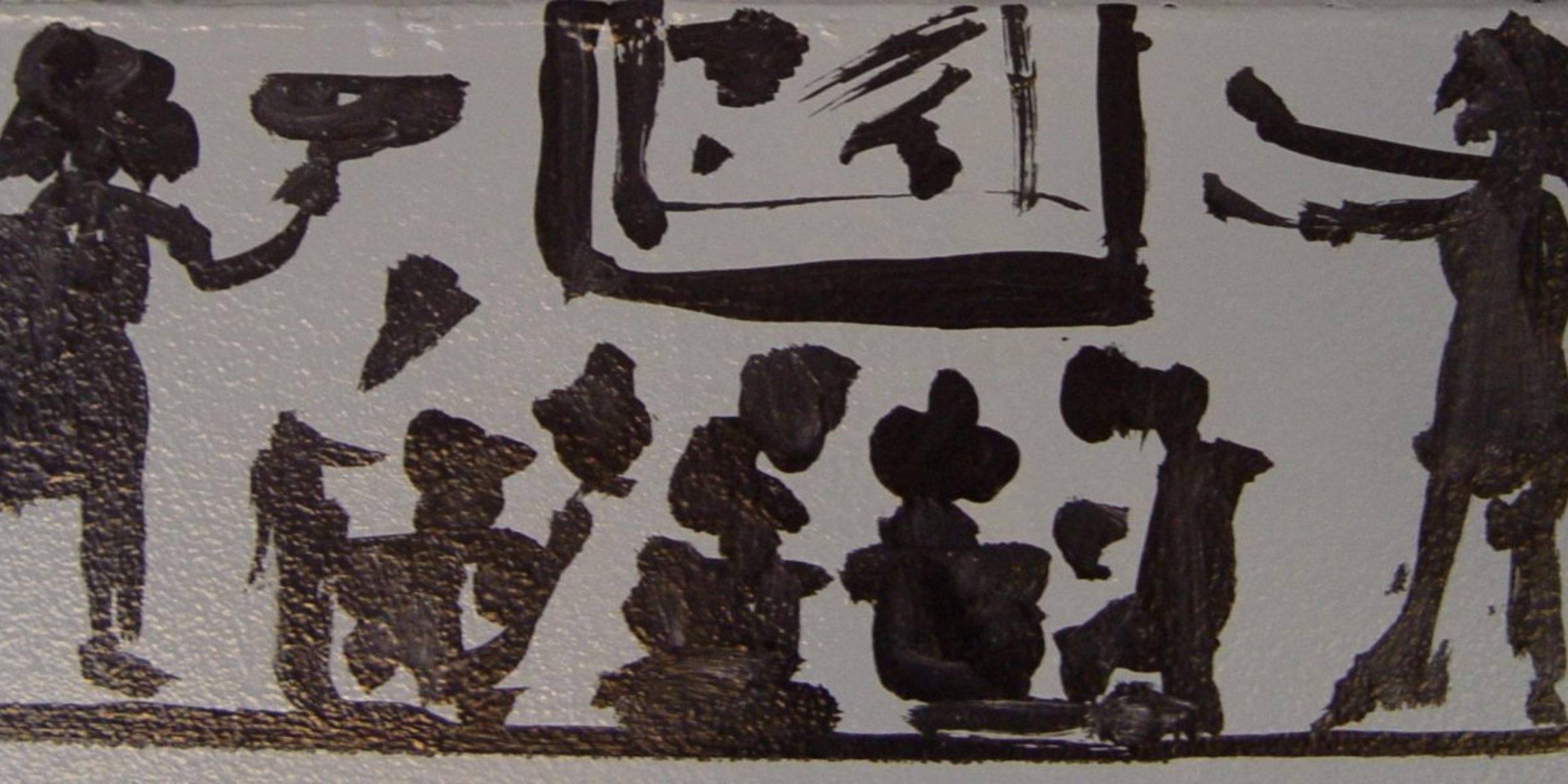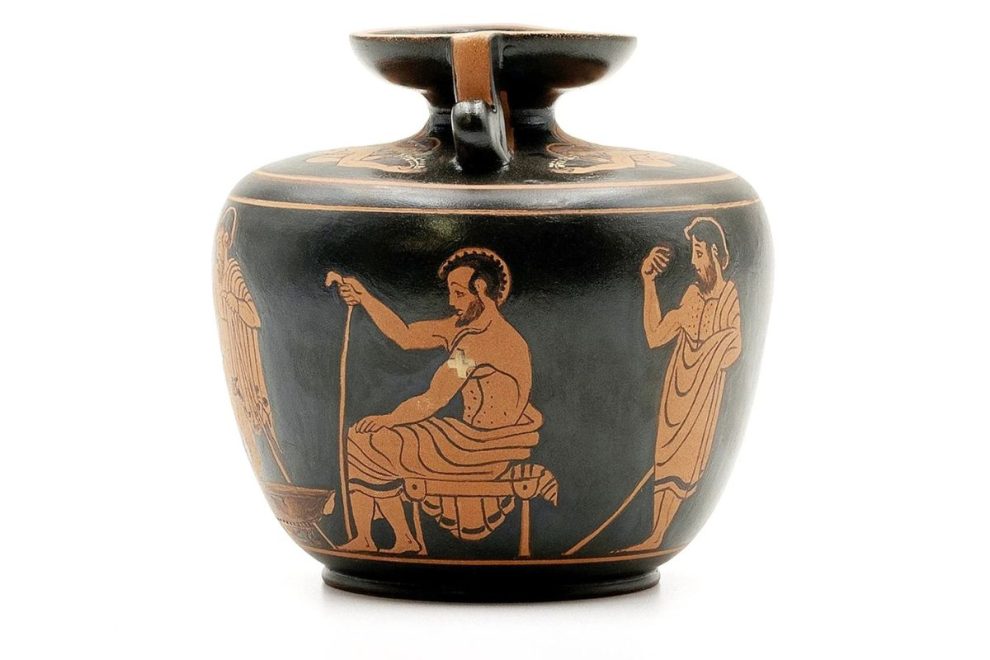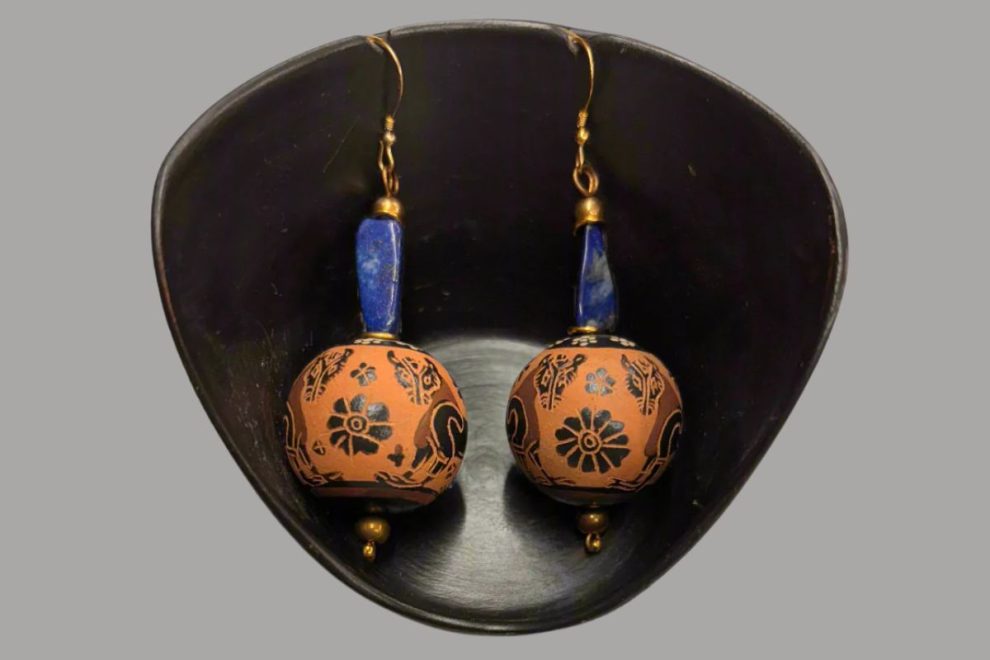
Ancient Greek art has had a big impact on the world.
Key Highlights
- Ancient Greece saw great potters like Exekias, the Amasis Painter, and Euphronios.
- These famous Greek potters changed pottery with new ways like black-figure and red-figure techniques.
- Greek pottery was not just useful; it showed artistic talent and cultural ideas.
- From large amphorae showing myths to everyday items, Greek pottery lets us see their lives.
- The work of these potters lasts through time, inspiring today’s ceramic methods and art.
A big part of this is the interesting area of ancient Greek pottery and vase painting. Greek vases are more than just plain containers. They come with detailed designs and show amazing skill in their creation. These vases offer us a great look into the beliefs, myths, and everyday life of this ancient culture, and many were crafted by famous Greek potters.

Who is Seen as the Most Important Ancient Greek potter?
Choosing the best potter in ancient Greek pottery is tough. Each artist made their own mark in different ways and times. Still, Exekias is often seen as one of the top ones. He worked in the 6th century BC and was skilled in the black-figure style. People loved how he showed strong feelings and stories on his vases. His work called “Achilles and Ajax Playing Dice” is well-known. It is not just a well-made pot; it carries a powerful artistic message. Exekias did not only focus on how to paint. He knew a lot about how to arrange images, how things look from different angles, and how the human body works. This knowledge helped him improve vase painting. Many artists who followed him still feel inspired by him. Exekias holds an important place in the story of ancient Greek pottery.
What Methods did Ancient Greek Potters use That Were Groundbreaking?
The lasting charm of ancient Greek pottery is closely tied to the amazing methods used by its makers. Two methods are notable:
- Black-figure style: This was popular in the 7th and 6th centuries BC. Artists would paint shapes and designs using a black mixture on red clay. Then, they carved lines through the black layer to show the clay underneath. This makes fine details and textures.
- Red-figure style: This style came about in the late 6th century BC. It flipped the black-figure method. The background was painted black, which made the figures keep their natural red color. This change allowed for more detail and smoothness in showing shapes and clothing.
| Technique | Description | Period |
| Black-figure | Black figures on red clay | 7th – 6th century BC |
| Red-figure | Red figures on black background | Late 6th century BC onwards |
A key part of both techniques was the firing process. Ancient Greek potters used special ovens that were often heated by wood. They baked the clay pots and set the painted designs there. By carefully changing the temperature and oxygen in the oven, they made the bright, vivid colors seen in ancient Greek pottery.

Famous Greek Potters
Many skilled potters lived in ancient Greece. Some names are known for their fantastic abilities. These artists used their talent in shape, skill, and stories to make Greek pottery a unique art that people admired everywhere in the ancient world. Let’s explore some of these famous Greek potters and their creations. They began with black-figure pottery. Later, they shifted to red-figure techniques. Their art still inspires and fascinates people who love art today.
Exekias: Master of Black-Figure Technique
Exekias is known as one of the best vase painters from ancient Greece. He lived in Athens in the 6th century BC. His main skill was the black-figure style. This helped him create strong and moving scenes on ancient Greek pottery. Many of his vases told stories about myths and heroes, showing his deep understanding of Greek legends. Exekias created more than just pretty vases. He used them like canvases to tell stories. He made his characters feel real and full of emotion. The way he drew, placed images, and expressed deep ideas within the black-figure style is still impressive today.
The Amasis Painter: Known for Detailed Figure Designs
The Amasis Painter created art around the same time as Exekias. He got his name from the potter Amasis, who he worked with often. The Amasis Painter is famous in ancient Greek pottery for his unique style. We still do not know his true name, but his black-figure pieces are easy to spot. What makes the Amasis Painter exceptional is his great focus on detail, particularly in human figures. His figures often show lively scenes from everyday life or stories. They have a feel of grace and movement. The artist understood human form and motion well. This helps his subjects feel real and full of life.
Euphronios: A Pioneer in Red-Figure Pottery
Euphronios was an important figure in the change from black-figure to red-figure pottery. He was well-known in Athenian art during the late 6th and early 5th centuries BC. He worked as both a potter and a painter. Euphronios used the new red-figure way of painting, marking the start of a new era in vase painting. This method helped him add more details and create more realistic shapes. It allowed Euphronios to display the human body in motion very well. His figures, often including athletes or heroes, showed energy and strength. Because of his skill with this new way of painting, vase painting grew during the Classical period, making him an important person in its history.
Kleitias: Renowned for the François Vase
Kleitias was a well-known Athenian potter from the 6th century BC. People remember him mainly for his stunning work on the François Vase, a large pot called a volute-krater. Today, this impressive vase is in the Archaeological Museum of Florence. It clearly shows the artist’s amazing skill and the beauty of ancient Greek pottery. The François Vase is a beautiful example of black-figure art. It has detailed scenes with over 200 carefully painted figures that share stories from Greek myths. This shows Kleitias’s storytelling skills and his great talent. The vase is large, and its detailed design and fine craft make Kleitias an important figure in ancient Greek pottery.
Ergotimos: Known for working with others on the pottery for the François Vase.
No talk about the François Vase is complete without mentioning Ergotimos. He was the potter who made the vase very well. While Kleitias painted the detailed scenes, Ergotimos’s work put a strong base for this great piece. The François Vase shows the combined skill of these two amazing artists. You can notice Ergotimos’s talent in the vase’s smooth shape, nice size, and careful work. Creating a vase that is large and complex like this needed great skill and focus. Therefore, the François Vase is a key example of ancient Greek pottery. It shows how a great potter and painter can join their skills.
Women as Ancient Greek Potters
Impact of Greek Pottery on Modern Art
Ancient Greece has a lasting influence on us today, mainly through their pottery. This influence shapes how we make ceramics now. It also inspires designers as they look for ideas in their art. These beautiful pots are not only for display; they give a view of ancient Greek life. They change how we see art today.
Influence on Contemporary Ceramic Techniques
Ancient Greek pottery changed crafting forever. They created the potter’s wheel and came up with new firing methods. These advancements helped form the pottery techniques we see in modern times. Many modern potters still turn to their Greek ancestors for ideas. For example, the black-figure and red-figure techniques inspire many current ceramic artists. These artists use like methods to create striking contrasts and detailed designs. Also, the shapes of ancient Greek vessels still guide today’s ceramicists. They often make new versions of these classic forms in their work.
Inspirations in Modern Art and Design
Ancient Greek pottery has influenced many artists and designers, not just in ceramics. The designs, shapes, and stories found on Greek vases can be seen in paintings, sculptures, fabrics, and graphic design. One important design is the maze. It usually stands for journeys and changes. Artists such as Pablo Picasso used this symbol to look into ideas about identity and the mind. Also, the elegant forms of Greek vases have influenced architects and designers who want to make lovely and balanced spaces.
Famous Ancient Greek Vase Paintings
Ancient Greek vase painting created well-known artworks. Each artwork tells a story and reflects the culture of its era. One example is the Panathenaic amphorae. These vases were awarded as prizes during the Panathenaic Games in Athens. One side often displayed a strong image of Athena, the city’s goddess. The other side featured scenes from sports events.
Here are some other important examples:
- Exekias’s “Achilles and Ajax Playing Dice”: This vase is famous for its deep feelings. It shows the heroes taking a break and playing a game during the Trojan War.
- The Euphronios Krater: This red vase illustrates the death of Sarpedon. It shows how skilled Euphronios was at showing the human body and movement.
Final Reflections
Ancient Greek pottery shows the art skills and cultural richness of ancient Greece. These lovely vases and their fine paintings offer us more than just nice looks. They also share important details about the myths, beliefs, and daily lives of a fascinating society. As we examine these pieces, and the work of famous Greek potters, we remember their strong influence and how ancient Greek art still affects us today.

